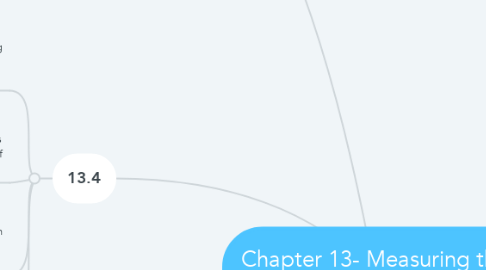Chapter 13- Measuring the Economy
by KELSEY SIVERTSON

1. 13.3
1.1. 1. An economy's *unemployment rate* is an important and helpful indicator in judging the health of that economy. A high unemployment rate usually means that a country's economy is poor.
1.2. 2. Citizens eligible to be in the work force are classified in three ways: employed (part of the labor force and currently working/holding a job), unemployed (not currently working or jobless but actively seeking work), and not in the labor force (eligible to be a part of the labor force but not working or actively searching for a job).
1.3. 3. High unemployment creates lost potential output in an economy, because less goods and services are produced when less people are working, and labor resources are not being fully utilized.
1.4. 4. There are four different types of unemployment: *Frictional unemployment* (a person is looking for a job after leaving a different one), *structural unemployment* (workers are laid off as a result of technology being able to do their job instead), *seasonal unemployment* (businesses shut down/slow down for a part of the year, usually due to weather), and *cyclical unemployment (cycles of growth and decline in the economy affect certain jobs).
2. 13.4
2.1. 1. The *inflation* rate in a country can have a big impact on its economy by increasing the average price level of goods and services.
2.2. 2. Economists use *nominal cost of living* and *real cost of living* to see the changes in prices over time. Real cost of living takes inflation into account, while nominal cost of living does not.
2.3. 3. Inflation can occur in different ways. Gradual inflation is known as *creeping inflation*, a negative inflation rate is known as *deflation*, and runaway inflation is known as hyperinflation.
2.4. 4. Inflation creates economic costs, like loss of purchasing power, high interest rates, and loss of economic efficiency.
3. 13.5
3.1. 1. Economies are constantly going through periods of growth and decline in economic activity, this recurring process is known as the *business cycle*. Business cycles are irregular in length and severity.
3.2. 2. There are four phases in the business cycle: *expansion* (economic growth), the *peak* (end of expansion), a *contraction* (economic decline), and the *trough* (lowest point of contraction).
3.3. 3. *Economic indicators* can be used to track the business cycle and make predictions on when the cycle will hit peaks and troughs. Indicators are usually measures that consistently rise or fall around a certain point in the business cycle.
3.4. 4. The business cycle is commonly defined as periods of boom and bust. The boom would be periods of economic expansion, while the bust is the contraction phase of the cycle, and sometimes results in a *recession* or *depression*.
4. 13.2
4.1. 1. *Gross Domestic Product* (GDP) serves as the main measure of the size of an economy.
4.2. 2. GDP is calculated by measuring expenditures on the goods and services produced in a country.
4.3. 3. The four components of GDP are: household consumption (C), business investments (I), government purchases (G), and the net of exports minus imports (NX).
4.4. 4. Growth in a country's GDP can improve other aspects of their people's well being, like literacy and education, health and life expectancy, and standard of living.


